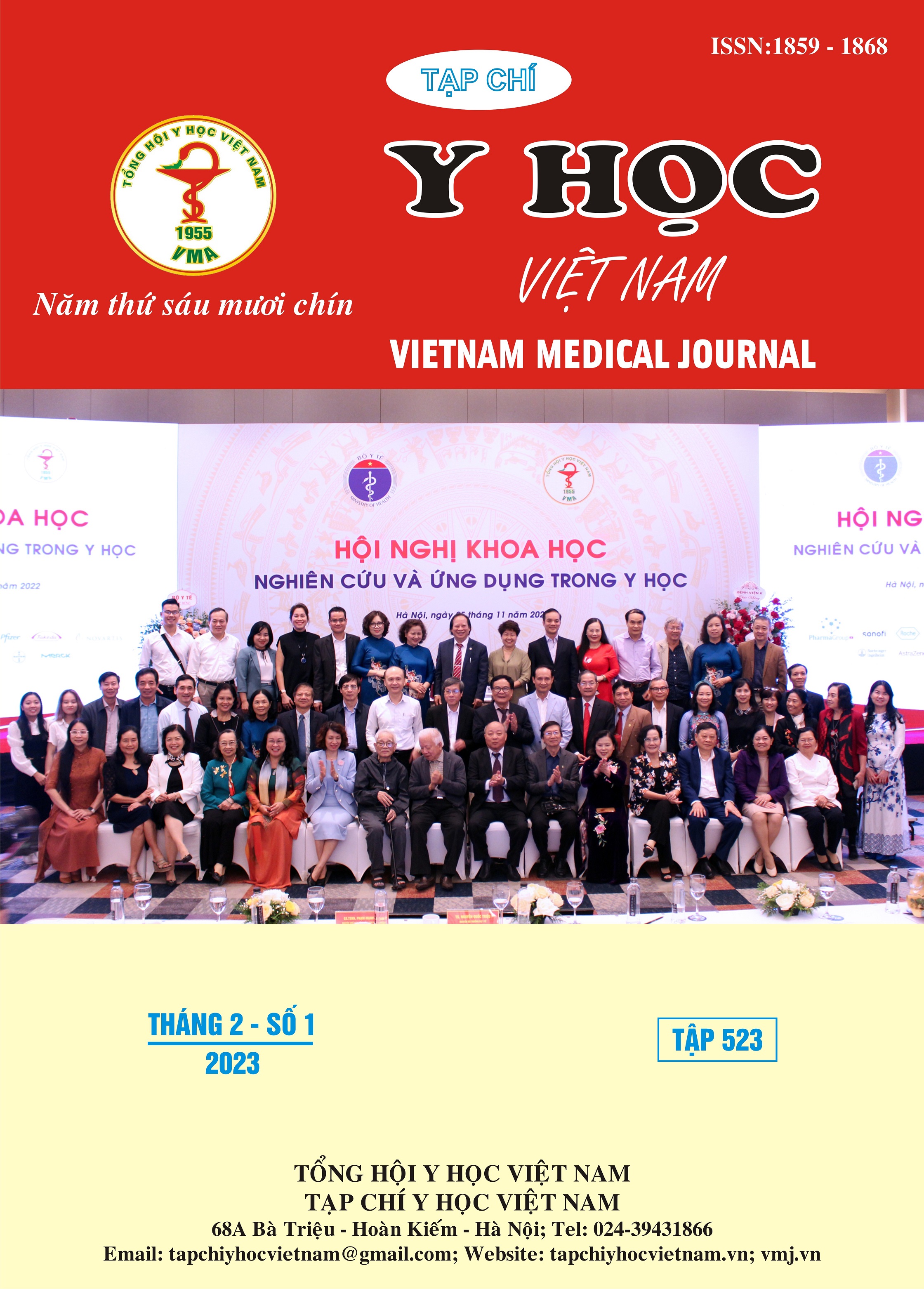X-RAY AND COMPUTED TOMOGRAPHY IMAGING IN DIAGNOSIS OF ODONTOID FRACTURE
Main Article Content
Abstract
Objectives: Analyzing and comparing of x-ray imaging and computed tomography features in diagnosis of odontoid fracture. Methods: Cross-sectional descripted retrospective studying of 44 odontoid fracture patients were diagnosed in Viet Duc hospital from January 2010 to June 2012. Results: 34 patients with simple odontoid fracture, 7 patients with atlantoaxial dislocations, 3 patients with atlas fracture have been involved in this research. X-ray open mouth views diagnose 81,8% cases of odontoid fracture, lateral views diagnose 68,2%. Type 2, type 3 of odontoid fracture rates was 86,4%; 13,6%, respectively. On computed tomography imaging, odontoid fracture with anterior displacement and horizontal fracture line were highest rates with 68,2% and 55,3% respectively. The Kappa value (0.45) for measuring the reliability between X-ray and CT in findings of odontoid fractures was moderate. Conclusion: Computed tomography imaging is gold standard for diagnose odontoid fracture. However, X-ray is still valuable in clinical practice in medical facilities that have not been equipped with modern specialized equipment. Computed tomography scan images could show directions of the fracture line to lead to treatment decisions.
Article Details
Keywords
Odontoid fracture, Xray, Computed tomography.
References
2. Alexander R. Vaccaro. Fractures of the cervical, thoracic and lumbar spine. Marcel Dekker, Inc; 2002.
3. Holmes JF, Mirvis SE, Panacek EA, et al. Variability in computed tomography and magnetic resonance imaging in patients with cervical spine injuries. J Trauma. Sep 2002;53(3):524-9; discussion 530. doi:10.1097/00005373-200209000-00021
4. Weisskopf M, Reindl R, Schroder R, Hopfenmuller P, Mittlmeier T. CT scans versus conventional tomography in acute fractures of the odontoid process. Eur Spine J. Jun 2001;10(3):250-6. doi:10.1007/s005860000208
5. Goldberg W, Mueller C, Panacek E, et al. Distribution and patterns of blunt traumatic cervical spine injury. Ann Emerg Med. Jul 2001; 38(1):17-21. doi:10.1067/mem.2001.116150
6. Hoàng Gia Du. Nghiên cứu chẩn đoán và phẫu thuật vít qua khớp trong điều trị chấn thương mất vững C1-C2. Luận án tiến sĩ y học, Trường Đại học Y Hà Nội; 2012.
7. Apfelbaum RI, Lonser RR, Veres R, Casey A. Direct anterior screw fixation for recent and remote odontoid fractures. J Neurosurg. Oct 2000; 93(2 Suppl):227-36. doi:10.3171/ spi.2000.93.2.0227
8. Agrillo A, Russo N, Marotta N, Delfini R. Treatment of remote type ii axis fractures in the elderly: feasibility of anterior odontoid screw fixation. Neurosurgery. Dec 2008;63(6):1145-50; discussion 1150-1. doi:10.1227/01.NEU.0000335780.87219.E9
9. Rybicki F, Nawfel RD, Judy PF, et al. Skin and thyroid dosimetry in cervical spine screening: two methods for evaluation and a comparison between a helical CT and radiographic trauma series. AJR Am J Roentgenol. Oct 2002;179 (4):933-7. doi:10.2214/ajr.179.4.1790933
10. Goethem J.W.M., Hauwe L., Parizel P.M. Spinal Imaging: Diagnostic Imaging of the Spine and Spinal Cord. Springer Berlin; 2007.


